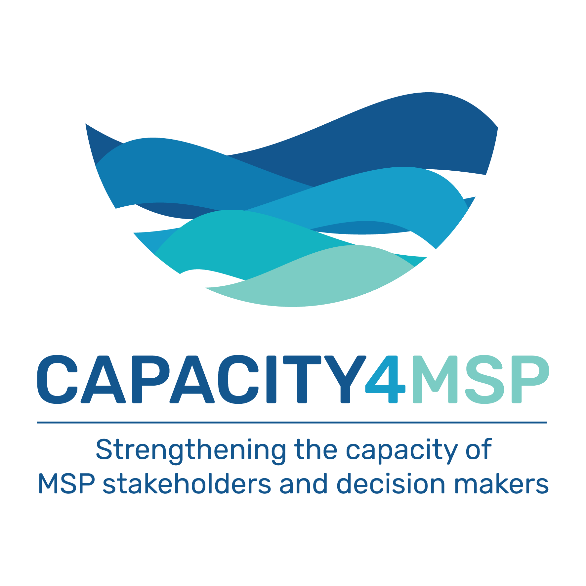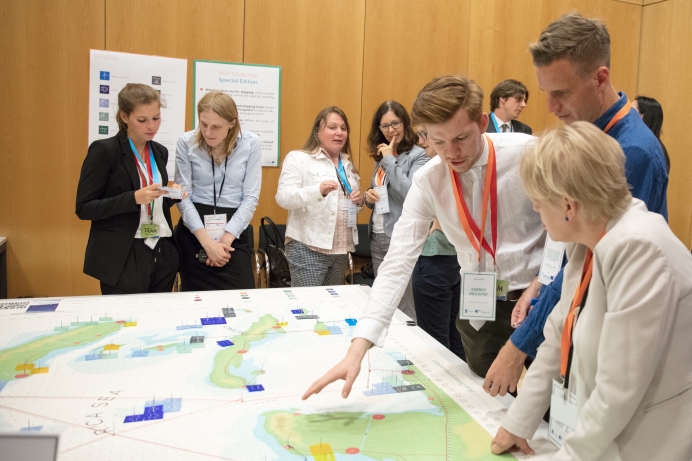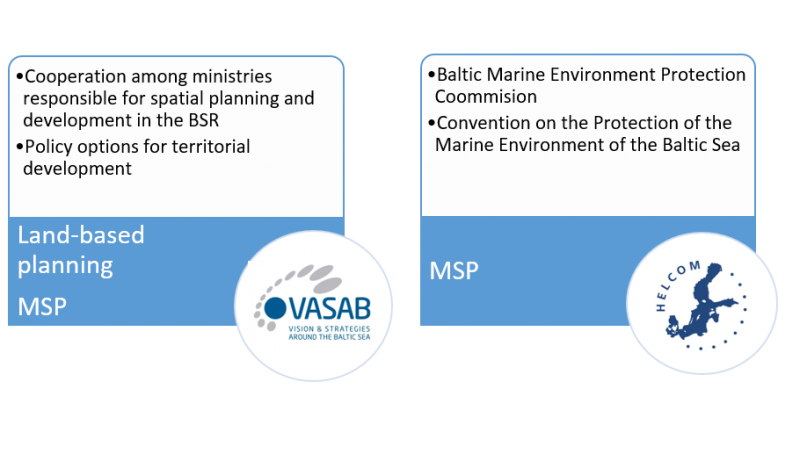One of the earliest definitions of spatial planning comes from the European Regional/Spatial Planning Charter, adopted in 1983 by the European Conference of Ministers responsible for Regional Planning: "Regional/spatial planning gives geographical expression to the economic, social, cultural and ecological policies of society. It is at the same time a scientific discipline, an administrative technique and a policy developed as an interdisciplinary and comprehensive approach directed towards a balanced regional development and the physical organisation of space according to an overall strategy”.
Spatial planning in the EUSBSR
Although spatial planning has a horizontal and overarching nature, here in EUSBSR with the new revised EUSBSR Action Plan coming into force starting next year, Horizontal Action “Spatial Planning” is transforming in a Policy Area (PA). The overall goal of the PA “Spatial Planning” is to increase territorial cohesion in the Baltic Sea Region. In 2030, the region shall be a better-integrated and more coherent macro-region that has reduced socio-economic development divides between its individual parts and has turned global challenges into assets. The current version of the revised EUSBSR Action plan for PA Spatial Planning has two actions – land-based spatial planning and maritime spatial planning (MSP).
Fig.1 Coordinators of the PA Spatial Planning
Work within PA Spatial Planning is strongly interlinked and embedded in the work of the two PA Coordinators – VASAB and HELCOM (Fig.1). Both organisations are lasting pan-Baltic organizations that have well-established stakeholder networks and cross-border cooperation traditions as well as have accumulated knowledge and know-how over the year of cooperation. Acting as coordinators of the PA is mutually beneficial to implement the EUSBSR and the frameworks of HELCOM and VASAB. The Strategy serves as enabler for broader cross-sectoral and multi-level cooperation and policy-building. (See Fig.2 for more detailed governance structure.) Cross-border cooperation and working towards common vision of the Baltic Sea Region has been the cornerstone of the joint work of VASAB and HELCOM looking for more efficient solutions.
Fig.2. Governance Structure of the PA Spatial Planning
PA Spatial Planning consists of land-based spatial planning and MSP activities within two actions.
Action 1: Strengthening territorial cohesion in the BSR through land-based spatial planning
PA Spatial Planning supports the implementation of the VASAB Long-term Perspective (LTP) within the EUSBSR and achieving coherent development of the Baltic Sea Region by:
- Contributing to better adaptation of strategies to different types of areas and propose specific approaches for a diverse urban pattern by ensuring pan-Baltic dialogue;
- Underlining the need to apply place-based approaches to territorial development policies as well as effective use of functional area’s concept and territorial impact assessment tools by acting as a platform for sharing knowledge and best practices, thereby contributing to the implementation of the Territorial Agenda for the EU from 2021 on;
- Observing the territorial development processes in the Region by using and advancing territorial development monitoring solutions, inter alia developed within projects of the ESPON Cooperation Programme;
- Encouraging transnational actions improving accessibility and connectivity of the Region using potential of TEN-T for regional development and observe regional effects of the European transport infrastructure development.
- Contributing to adaptation, mitigation and resilience to climate change in land-based spatial planning process.
Action 2: Ensuring coherent maritime spatial plans throughout the Baltic Sea
The Regional Baltic MSP Roadmap 2013-2020, along with VASAB LTP and HELCOM Baltic Sea Action Plan sets the framework for MSP cooperation and defines the necessary steps to achieve the goal to draw up and apply maritime spatial plans throughout the BSR which are coherent across borders and apply the ecosystem approach to contribute to reaching jointly agreed environmental and climate goals. Transboundary coherency of maritime spatial plans implies strengthening of cooperation with non-EU neighbouring countries and organizations.
The upcoming decade will make the existing challenges more visible – ageing, rural depopulation and rapid growth of the urban areas as well as climate change will be impossible to oversee. The revised EUSBSR Action Plan sets prerequisites for addressing these challenges in a collaborative and overarching matter. Continuous cooperation in the Baltic Sea Region is crucial to address these challenges in a coordinated matter and more effectively. The joint dedication to achieve the Sustainable Development Goals reinforced in the revised EUSBSR Action Plan as well as the “A future for all places” of the Territorial Agenda 2030 will play a leading role in future cooperation in the BSR. PA Spatial Planning will continue cooperating tirelessly looking for new forms for collaboration and knowledge exchange towards achieving the target of a more coherent and better integrated macro-region by 2030.
Flagships of PA Spatial Planning
It is worth mentioning that EUSBSR flagships serve as pilot examples for desired change. Here are projects and processes demonstrating the progress of the Spatial Planning implementation in EUSBSR:
MARA (Mobility and Accessibility in Rural Areas) is an Interreg BSR project which aims to improve the mobility and accessibility in and to remote and rural areas in the countries of the Baltic Sea region (BSR). Many of those areas are also important touristic destinations. The project partnership consists of 12 regional and national public administrations and universities from nine BSR countries. 13 associated partners are involved.
Population decline, demographic change and seasonal fluctuation of inhabitants and tourists are some of the common challenges that rural areas of the Baltic Sea Region are facing. Furthermore, car dependant lifestyle, expensive public transport and absence of a digital solution to facilitate the use of transport services are factors to increase the importance of MARA project that aims to tackle existing challenges in rural areas.
To address the mentioned challenges MARA aims to crosscheck the actual mobility demand of residents and tourists with current mobility offers. Different analytical tools will be developed to gain insights into the possibilities of improving the mobility offers in rural areas. Based on those results suggestions will be elaborated on how to improve existing mobility offers as well as to develop new mobility solutions that are climate-friendly and sustainable.
 |
 |
Project platform Capacity4MSP funded by the Interreg BSR programme aims to strengthen the capacity of maritime spatial planning stakeholders, policy- and decision-makers through intensified dialogue activities and amplifying gained knowledge in maritime spatial planning. Capacity4MSP builds on the results of the current and recently completed MSP projects and ongoing MSP processes in the Baltic Sea Region.
Capacity4MSP is increasing the visibility and impact of projects, building up new synergies, deepening and widening gained know-how by synthesizing, amplifying and transferring the project outcomes to new practical solutions. A regular dialogue with stakeholders is a crucial part of Capacity4MSP. By collecting and discussing lessons learned in previous MSP projects and national MSP processes, project will ensure efficient and value-added knowledge-transfer within and outside the Region and across various sectors and governance levels.
Latest and upcoming activities of PA Spatial Planning
To better understand how PA Spatial Planning operates, get involved in:
- September 15 Annual EUSBSR Forum Workshop “Where Land and Water Meets in BSR 2050”
Find the summary, presentations and concluding video from the Annual Forum workshop here and here.
- 1-2 June, 2021 Save the Date! 4th Baltic MSP Forum
Together with Capacity4MSP and Land-Sea-Act final conferences, already the 4th Baltic MSP Forum will take place to discuss achievements and current challenges in MSP.
For more information visit VASAB, HELCOM, PA Spatial Planning, MARA flagship, Capacity4MSP flagship webpages!






